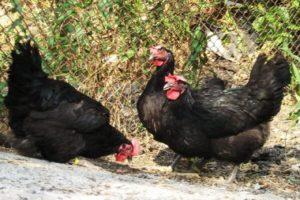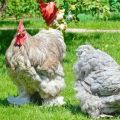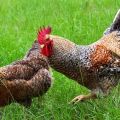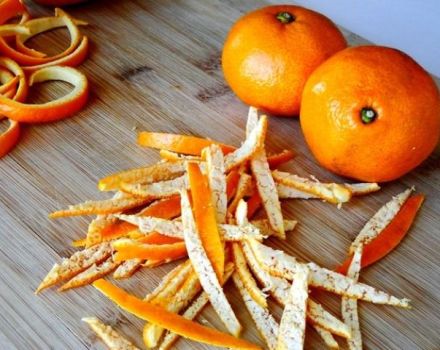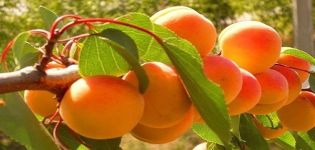Description and characteristics of Leghorn chickens, conditions of detention
Raising various breeds of chickens, poultry farmers are looking for an option that would be the leader in egg production. Leghorn is a type of chicken that is prized precisely because of this characteristic. During its existence, the breed managed to gain popularity among professional and amateur poultry breeders.
History of the origin of Leghorn chickens
The birthplace of the breed is Italy. After some time, the chickens were brought to America, where they began to cross with other varieties. The desired result was a bird with ideal characteristics. Experts focused on the highest possible percentage of egg production.
As soon as it was possible to achieve success, Europe became interested in the breed. Later Belarus, Russia and Ukraine needed Leghorn. With the introduction of the Leghorns into the country in the 20th century, chickens immediately became popular.
Description and characteristics of the breed
You can recognize Leghorn by external data, color and demeanor.
Varieties and their appearance
Regardless of color, chickens and roosters are characterized by certain body parameters. This is the so-called standard that the chicken varieties meet. The bird's body is folded harmoniously. Despite their small size, they stand out for their proud posture.
A long neck of medium thickness connects the body with a medium-sized head. The earrings are colored deep red. In roosters, the leaf-shaped comb stands straight, in chickens it hangs to one side. The iris of the eyes, orange in color, loses brightness over time. The older the chicken, the paler it is.
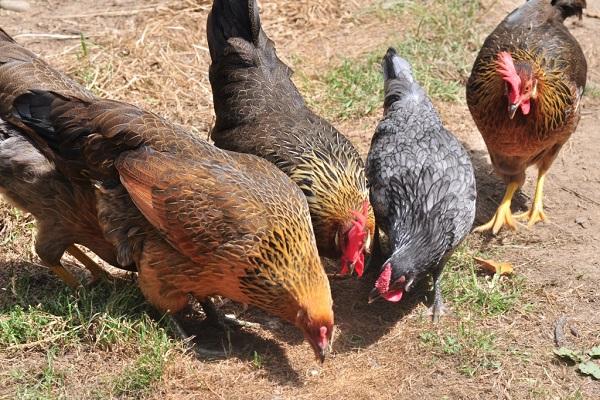
Layers and roosters have voluminous breasts protruding forward. This gives the bird a stately appearance. There are the most unusual Leghorn colors. White Leghorns are most often bred.
Dwarf
The subspecies is distinguished by its high friendliness towards other birds. They get along with other birds without problems. The fertilization rate of eggs is 95%, which is much higher than other birds. This phenomenon is observed due to the activity of adult males..
Dwarf Leghorn is an economical species, as it eats little food. They easily pass acclimatization, as they are not afraid of a cold snap. Only high quality nutritious food is suitable for feeding.

White
White Leghorn is a versatile variety. The survival rate of birds allows them to be kept in regions with a changeable climate.White Leghorns are easy to breed. They require standard conditions of keeping and the usual food for birds.
Brown
The colors of cocks and layers are slightly different. The body of the females is covered with feathers of an even brown color. Closer to the tail, the color darkens a little. In roosters, the tail, breast and abdomen are covered with dark feathers with a green tint.
Dalmatian
The Leghorn variety is also called striped variegated. The black and white color makes him look like a Dalmatian, so it was decided to name the breed that way. They are relatives of spotted crosses and were bred in 1904.
In those years, speckled chickens were very rare, so they gained popularity at a high speed. Dalmatians are great speed and have a lot of advantages.
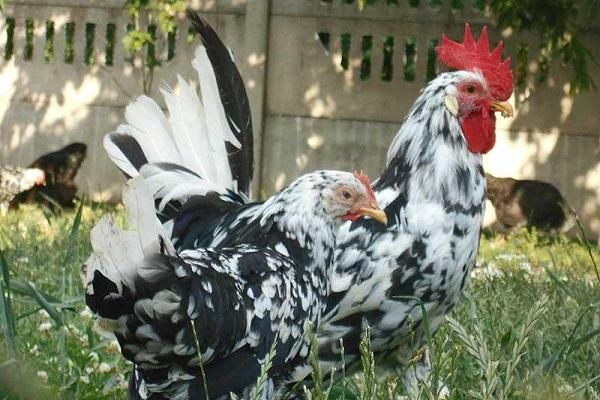
Isabel
Chickens are colored silver or ash. Feathers with a golden color are visible on the back. Isabella is completely considered an ornamental species.
Lavender
The Leghorn variety combines two criteria - incredible color and high productivity. Pink feathers look unusual, and even if the birds are chickens. They are shy enough, they react nervously to any extraneous manifestations.
Due to their low weight, they are classified as decorative birds. One layer produces about 260 eggs per year. Divorced exclusively for eggs.
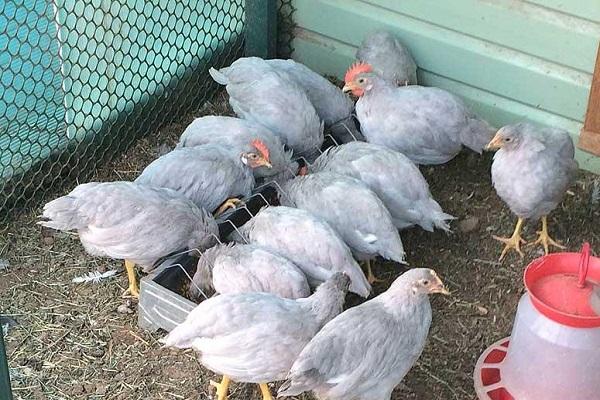
The nature and temperament of birds
Chickens do not show aggressiveness towards other birds. They look calm and not stupid. People are not afraid and are treated with trust. During the day, they actively explore the territory, as they do not like to sit still.
Breed productivity
The main advantage of chickens is considered to be high egg production, due to which the breed has gained significant distribution. Layers are ready to lay eggs at 4 months of age. One bird brings about 230 eggs per year.
The average egg weight is 55-60 g. The shell is colored white. When broken, it does not give in immediately, since it differs in strength.
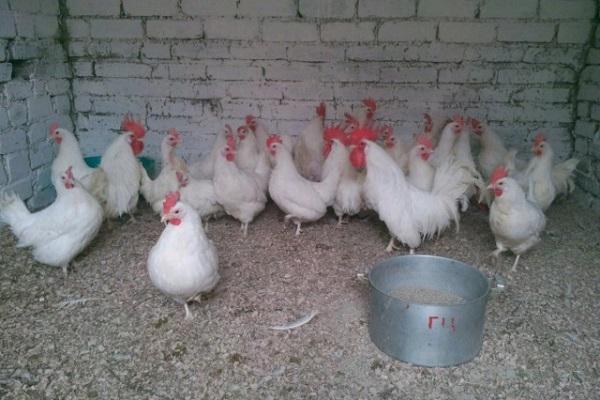
How to determine the age of a chicken?
Poultry farmers who cannot boast of great experience in breeding birds fall for deception on the part of sellers. They go to the market in order to buy young layers, and come home with old hens, which at any moment stop laying eggs. To avoid such situations, during the inspection, follow the rules:
- Comb color. In adult chickens, due to circulatory disorders, the comb has a pale pink color. If you touch it, you feel a chill. In young birds, it is bright red and warm.
- Stomach. In young chickens, it is soft. Over the years of keeping in old birds, the belly becomes covered with fat and becomes hard.
- Beak color. In older hens, it is pale yellow, while in young hens it is a rich orange hue.
There is a little trick that can be used to tell if a hen is young. They are given a treat. If the birds quickly run to him, then they are young and inexperienced. Aged hens approach food with caution.
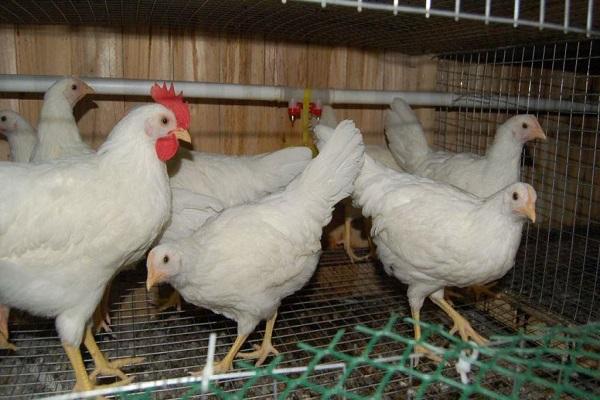
How to tell a chicken from a rooster?
On the first day of the appearance of the chicks, gender is determined. Females are completely white, gray or black. While young males are striped.
Distinguishing a chicken from a rooster at an age is quite problematic. It's all about the bushy tail, which both the laying hen and the rooster have. In this case, pay attention to the comb.
Main pros and cons
Among the advantages of the breed are:
- large egg size;
- high rate of egg fertilization;
- rapid onset of puberty;
- economical feed consumption;
- friendly and calm nature;
- adaptation to climatic conditions.
The disadvantages include:
- meat is not eaten;
- birds are afraid of noise and bright light;
- poor development of maternal instinct;
- do not incubate eggs on their own.
Meat is not eaten, not only because of its taste.The size of the birds makes it impossible.
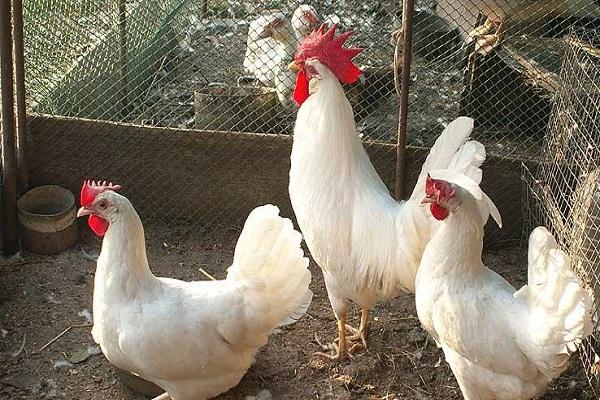
The specifics of the breed
Like other chickens, Leghorn prefers standard housing.
House requirements
The room where the birds live - the chicken coop, should be spacious. If the birds are too crowded, it contributes to the development of diseases. The coop should be warm during the cold season. Birds cannot stand drafts.
Roosts should be set high off the floor to keep birds from feeling cold in winter. It is good if the house has at least one window. Laying boxes are installed in a secluded place.
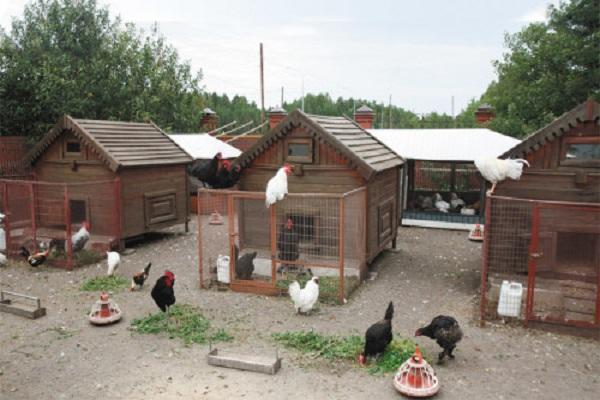
Preparing a place for walking
The walking area is organized near the chicken coop. The allotted area is covered with a fence made of wooden planks or mesh. The height of the fence should be within 1.5 m so that the birds do not fly over.
The best option is a patch of grass so that Leghorn can get his own food by pecking at the green. Chickens love to dig in the ground, catching beetles, worms and other animals. This technique helps to reduce feed costs.
Installation of feeders and drinkers
The depth of the food container should be at least 5-10 cm. The length depends on the number of chickens. One bird is allocated 10-15 cm.
Feeders should be designed so that Leggorns cannot climb inside. This will keep the forage from scattering and protect the grain from excrement. The advantage is provided by feeders that are transferred from one place to another.
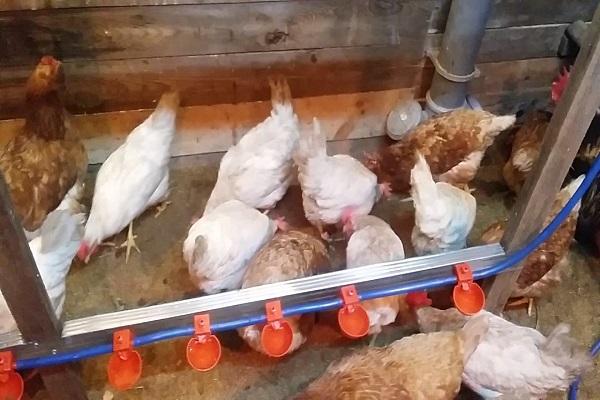
Water containers should be well washed and filled with water. It is important that the drinker does not tip over. Drinker material must be made of safe materials.
Plastic bottles, nipple drinkers, open and vacuum devices are used as water containers. For industrial chicken breeding, nipple drinkers are suitable. For private households, any of the existing options can be used.
Seasonal molt
The phenomenon is typical for all birds and is accompanied by a break in egg production. Leghorns continue to rush even in winter, but not as actively. In order to restore productivity, poultry farmers stimulate molt.
Reducing daylight hours speeds up the process. Leghorns rush actively for 200-250 days a year.
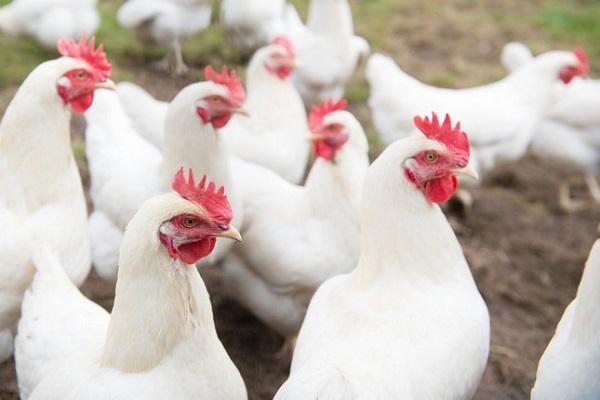
Replacement of livestock
Chickens lay eggs actively in the first year of life. To always have eggs on the farm, the birds are changed every year. It is recommended to start new laying hens after the end of the peak production of domestic hens.
What to feed the breed
The diet of chicks and adult birds is different. Purchased products are used as feed, as well as made by hand.
Chicks
Little chickens use a mixture of boiled eggs, cereals and herbs. A new portion is prepared before each feeding. The role of greens is played by chopped onions, dandelion tops, dill or nettles.
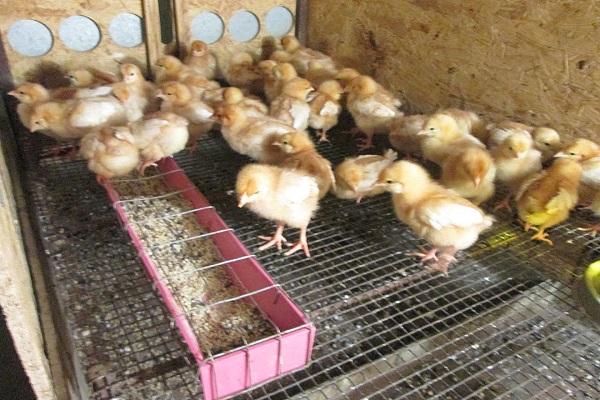
As soon as the chicks are full, the food is taken away so that insects do not breed in the box. Chicks also eat starter feed formulas. When the bird reaches 2 weeks of age, whey, root vegetables, fish oil and yeast are added to the diet.
As they grow older, crushed eggshells are added to the diet. Cabbage will be useful, as it is rich in various vitamins. From birth to 3 weeks of age, the number of feedings per day is 6 times. After that, the figure is reduced up to 3 times.
When chicks reach 4 weeks of age, they are transferred to the diet of adult Leghorns..
Adult chickens
Leghorns eat little food because of their size. It is important that the food is nutritious and rich in nutrients. The feed should contain everything that is needed for the growth and laying of eggs.
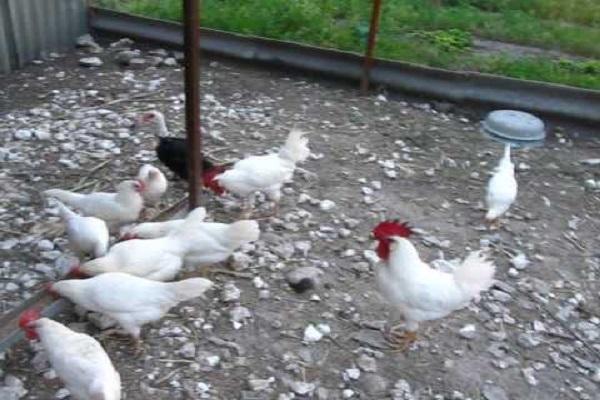
Birds love grain, bone meal, chalk, lime, and other dietary supplements. Whole grains are given to the bird in the morning and evening. At lunchtime, a mash is made, which is diluted with broth or plain water.
In winter, the mash must be warm.Chickens love corn, barley and wheat. The basis of the mash is bone meal, vegetables, fresh grass and bran.
Calcium is added to the diet of layers, which is needed to strengthen the eggshell. Its source is crushed shells from used eggs. Chickens can also be given shells, previously crushed to the state of small grains.
Breeding and incubation
Layers do not have a maternal instinct, so an incubator is used for breeding. This is a real lifesaver for poultry farmers, as the device solves the problem. The incubation period for Leghorns ranges from 26 to 28 days. The offspring are healthy and strong, and grows quickly. During incubation, losses are insignificant - only 8-13%.
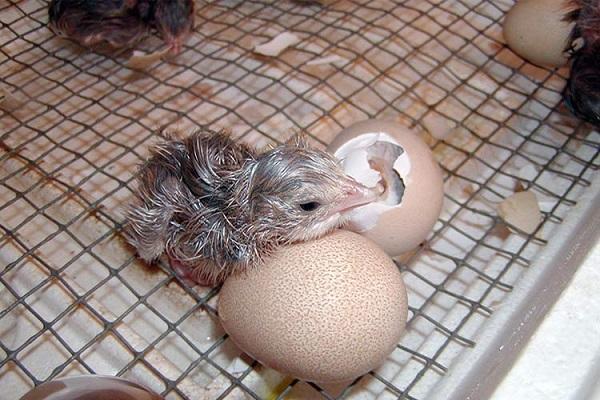
Diseases and how to treat
Feathered Leghorn breed is characterized by such a disease as noise hysteria. Birds growing in farms with increased noise are exposed to it. As a rule, they have an industrial direction.
Chickens become aggressive, often flap their wings and shout at each other. At the time of the attack, they beat against the walls, injuring themselves and the birds around them. As a result, the Leghorns' appearance deteriorates. They lose their plumage and the hens produce few eggs.
To reduce the number of attacks per day, noise sources are eliminated. This is considered the main cure. In addition, the Leghorns are provided with the ideal conditions to increase egg production.
Chickens often suffer from parasitic diseases. This happens due to the poor cleanliness of the room in which they are kept. The litter should be regularly changed to a new one, and the room itself should be ventilated. If you follow the rules of keeping, there will be no problems with the birds.
